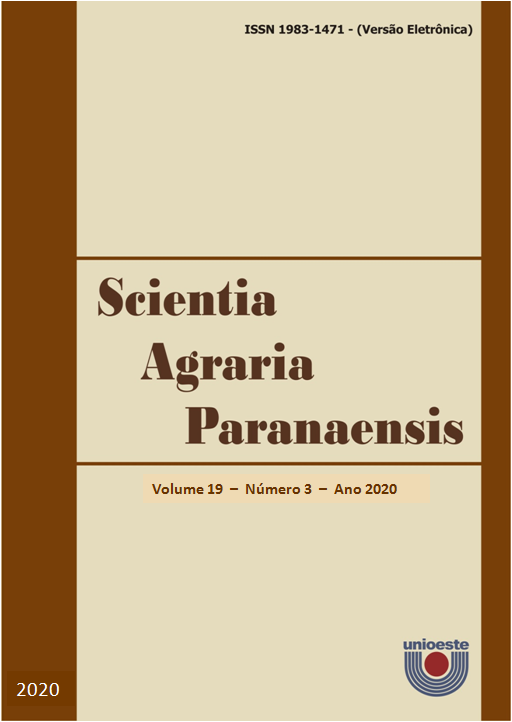Productivity of tomato hybrids due to the application of calcium silicate
DOI:
https://doi.org/10.18188/sap.v19i3.24204Resumo
Silicon is a beneficial nutrient for the growth and production of many plant species, including tomatoes. The objective was to evaluate the influence of calcium silicate on the morphophysiological characteristics of tomatoes and the absorption of silicon, calcium, and magnesium. The experiment was conducted in a protected environment from August to December 2017, in a random block design, in a 2 x 5 factor scheme, with four repetitions. The first factor consisted of two hybrids (Ivety and Natalia) and the second factor by doses of calcium silicate (0, 150, 300, 450 and 600 kg ha-1). The fruits were evaluated for number of fruits per plant, longitudinal and transversal diameter, average fruit mass, commercial, non-commercial, and total productivity. The plants were evaluated for number of leaves, stem diameter, plant length, leaf area, membrane integrity damage, lignin content, stem and leaves dry mass, silicon accumulation and content, calcium, and magnesium contents in the leaves and in tomato fruits. The morphometric characteristics of Ivety and Natalia tomato hybrids were not altered by increasing doses of calcium silicate. The increased doses of calcium silicate influenced the non-commercial productivity of the tomato fruits, showing a reduction of this with the increased doses. Calcium silicate influenced differently in each hybrid, and it is worth noting that these results may vary in terms of genetic material and cultivation environment.
Downloads
Publicado
Como Citar
Edição
Seção
Licença
Aviso de Direito Autoral Creative Commons
Política para Periódicos de Acesso Livre
Autores que publicam nesta revista concordam com os seguintes termos:
1. Autores mantém os direitos autorais e concedem à revista o direito de primeira publicação, com o trabalho simultaneamente licenciado sob a Licença Creative Commons Attribution que permite o compartilhamento do trabalho com reconhecimento da autoria e publicação inicial nesta revista.2. Autores têm autorização para assumir contratos adicionais separadamente, para distribuição não-exclusiva da versão do trabalho publicada nesta revista (ex.: publicar em repositório institucional ou como capítulo de livro), com reconhecimento de autoria e publicação inicial nesta revista.
3. Autores têm permissão e são estimulados a publicar e distribuir seu trabalho online (ex.: em repositórios institucionais ou na sua página pessoal) a qualquer ponto antes ou durante o processo editorial, já que isso pode gerar alterações produtivas, bem como aumentar o impacto e a citação do trabalho publicado (Veja O Efeito do Acesso Livre).
Licença Creative Commons
Esta obra está licenciada com uma Licença Creative Commons Atribuição-NãoComercial-CompartilhaIgual 4.0 Internacional, o que permite compartilhar, copiar, distribuir, exibir, reproduzir, a totalidade ou partes desde que não tenha objetivo comercial e sejam citados os autores e a fonte.


